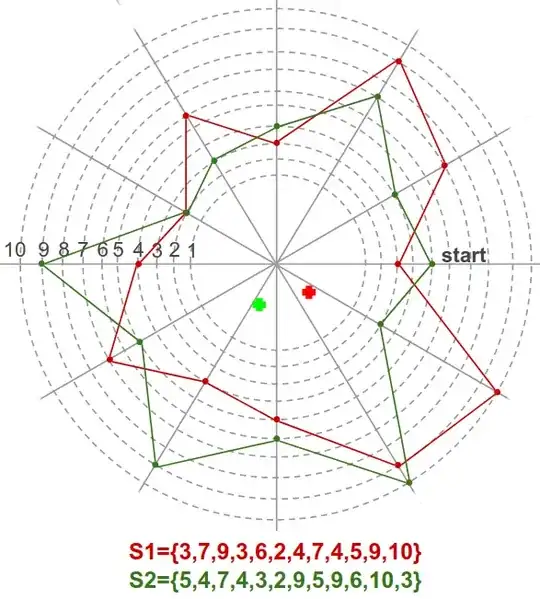To visualize this, I've created the following diagram.

I have sets of 80 numbers each. Here, just to draw it easily, I'm showing them as sets of 12 numbers each. The sets S1 and S2. Each set can contain 12 numbers ranging from 1 to 10, and the order of the number in the set matters. i.e. {1,2,3} is not the same as {1,3,2}.
In 2D space, there are 10 concentric circles as shown by the dotted lines in the image. Each circle represents the possible values that can be contained in a set. Each of the straight lines jutting out of the center of the image, represents the position of each number in the set, starting from the "start" line. So since S1 has 3 as the first number, the first red dot is placed on the third concentric circle at the start line. Moving counter-clockwise, the next number is 7, which gets placed on the next line at circle 7 and so on.
Circles placed as such, form the red and green polygons shown in the image.
Question:
I want to find a unique center point for each such polygon formed by any such set containing 12 numbers where the numbers may be generated randomly. I've placed a red and green plus point for what I'd assume might be the approximate centers of the polygons.
- I'm not particular about whether only the vertices of the polygon are considered for finding the center or whether the sides of the polygon are also considered.
- I'm also not particular about whether the center point lies within
the polygon or not.
I just want to ensure that each unique polygon should definitely have a unique center point on the given 2D space. Is there a formula to calculate it and is it possible to ensure a unique point? Do remember that I'll eventually be using sets of 80 numbers each, containing numbers ranging from 1 to 10.
I've seen the centroid formulae and this, but I'm not sure if they'd mathematically ensure unique center points.